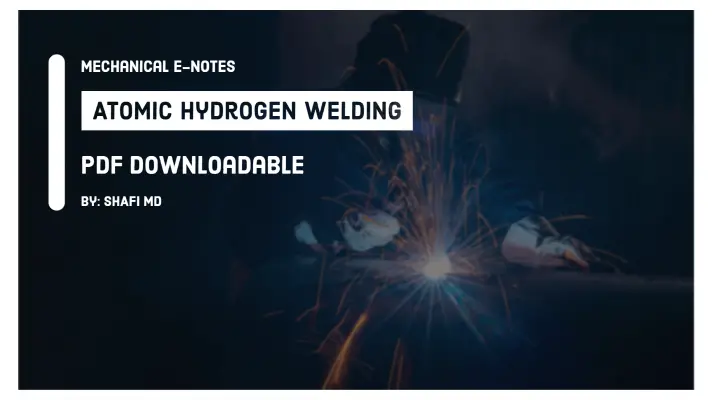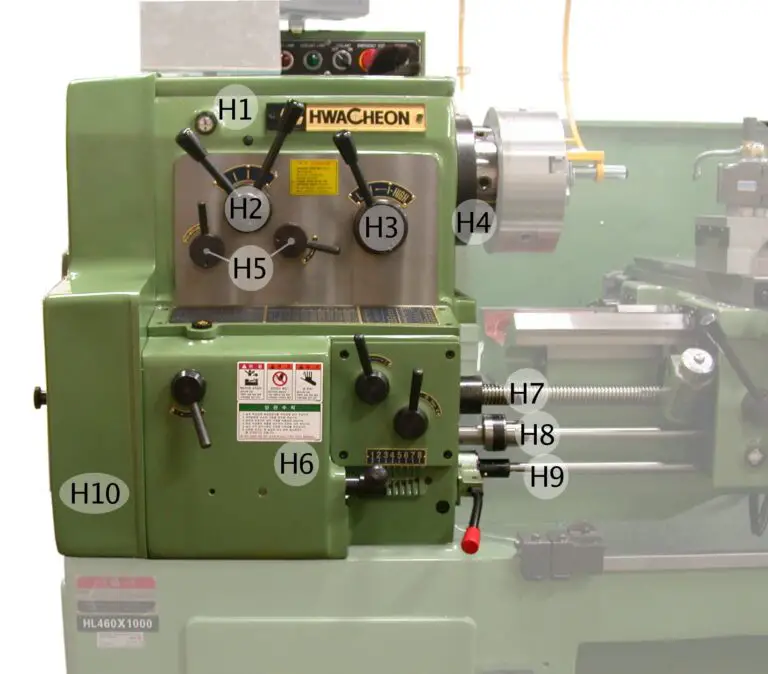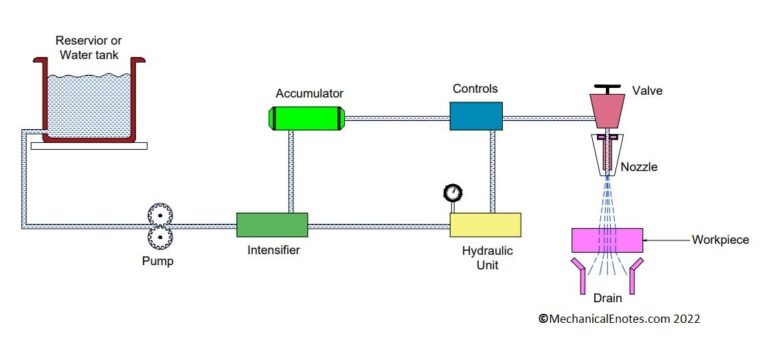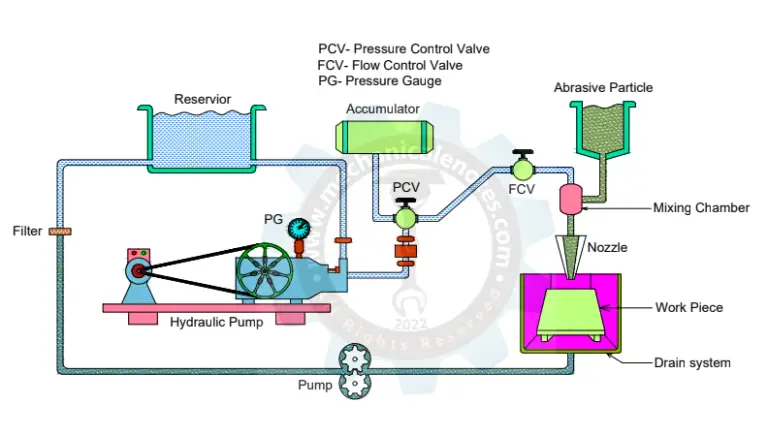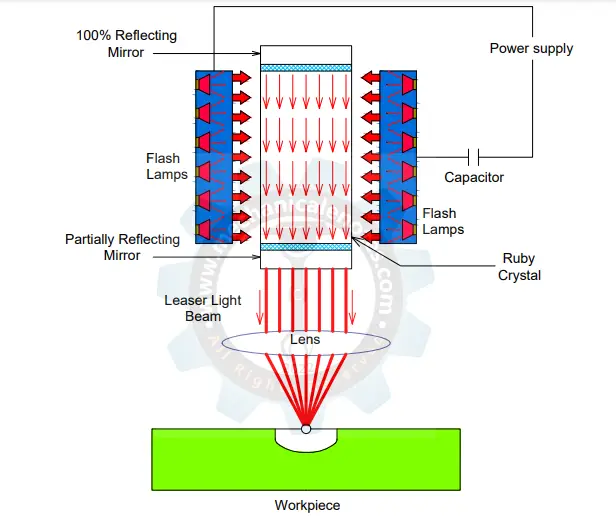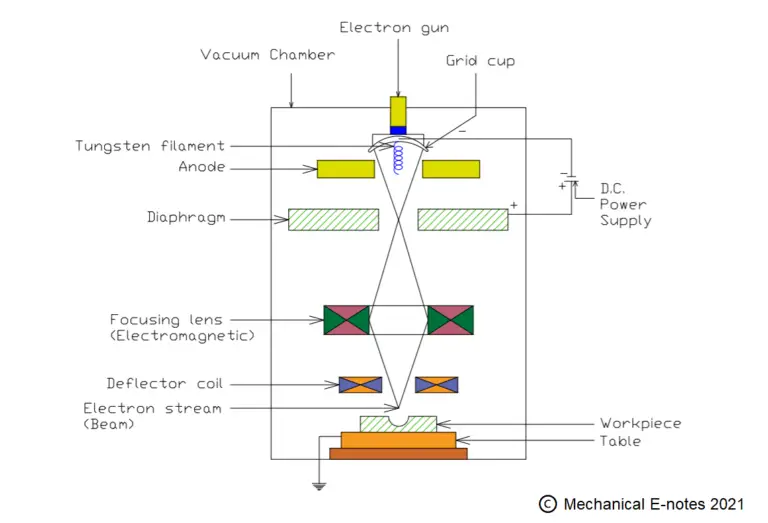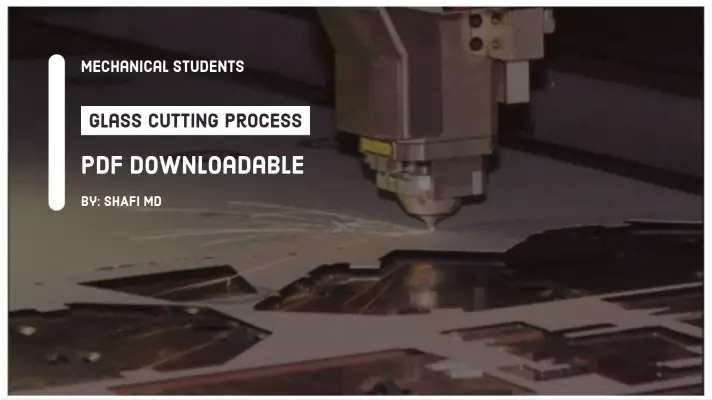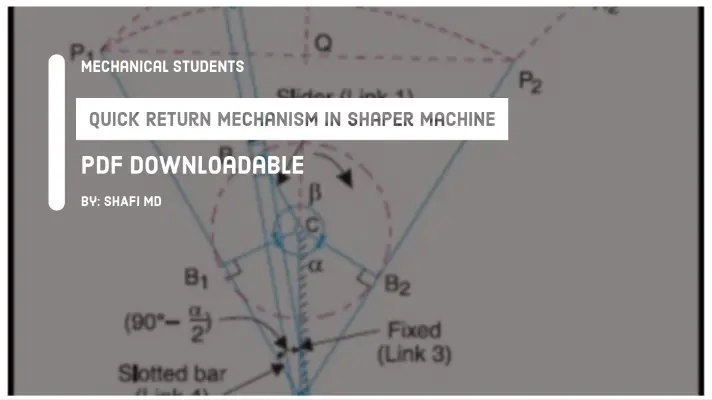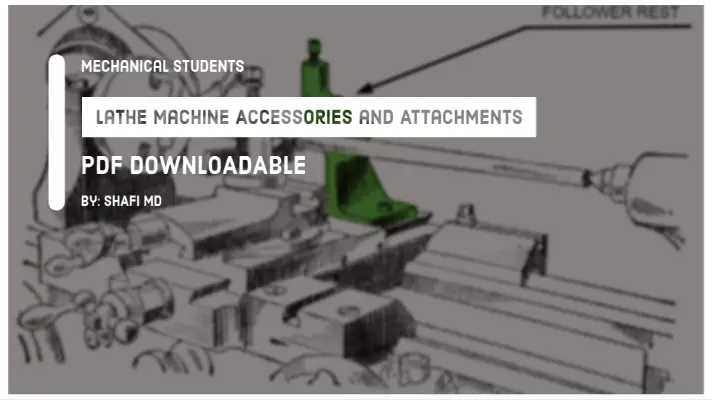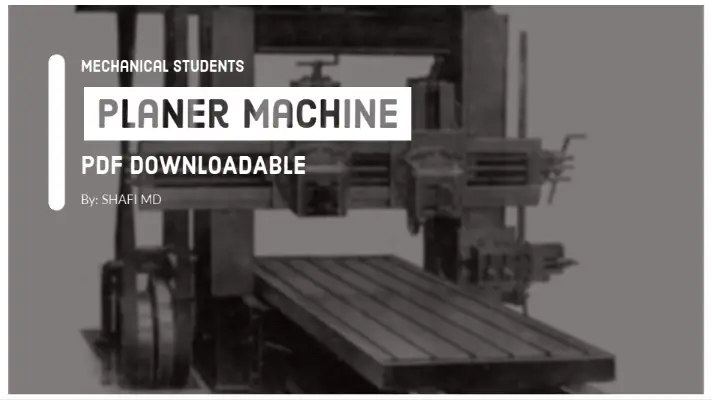NC Machine: Definition, Types, Components, Working, Applications, Advantages, Disadvantages, and Differences [PDF]
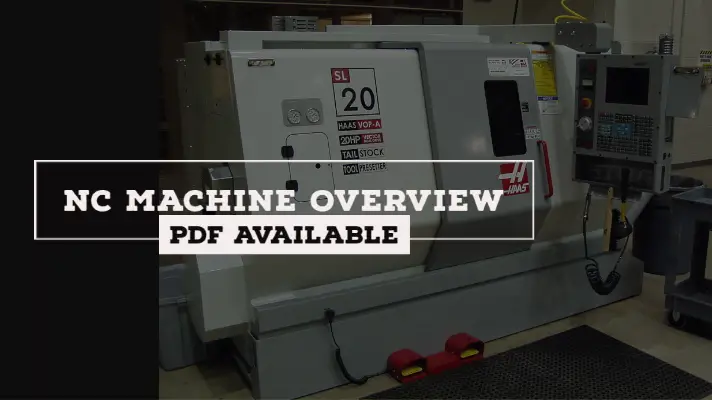
In the last session, we had discussed conventional machines like Drilling machine, Milling Machine, Grinding Machine, lathe machine, etc. Whereas in today's session, we will discuss briefly on NC Machine along with its Definition, Types, Components, Working, Applications, Advantages, Disadvantages, and Differences.
Let's see the definition of it...
Definition of NC Machine:
If each axis of a machine tool is controlled by using numbers or numerals, it is called as a Numerical Controlled Machine tool or NC Machine tool.
Types of NC (Numerical Control) Machine:
There are 3 types of NC machines and are as follows.
- Traditional Numerical Control (NC Machine)
- Computer Numerical Control (CNC Machine)
- Distributed Numerical Control (DNC Machine)
The explanation for the above types of NC machines are as follows.
1. Traditional Numerical Control (NC Machine):
As the article is about the NC machine, you can just scroll down to know the detailed explanation of it.
Anyhow I will tell you in short i.e. the NC machines are the evolution after Conventional machines. They can run with the help of a tape reader system i.e. whatever the operation you want to perform, you can punch it on the tape, and thereby the NC machine can perform that operation.
The process for running the NC machine by the Tape reader system was explained in detail in this article.
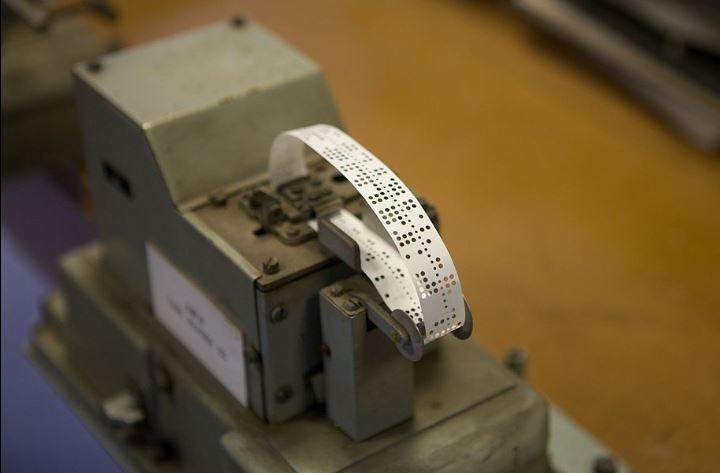
2. Computer Numerical Control (CNC Machine):
The Evolution of the CNC machine takes place after the evolution of NC machines. To overcome the limitation of the NC machine, the CNC machine has come into the picture.
In the case of NC machines, the Tape Reader system is used, which after several usages, the wear and tear of the tape take place and the operator has to punch again on the new tape to carry out the operation.
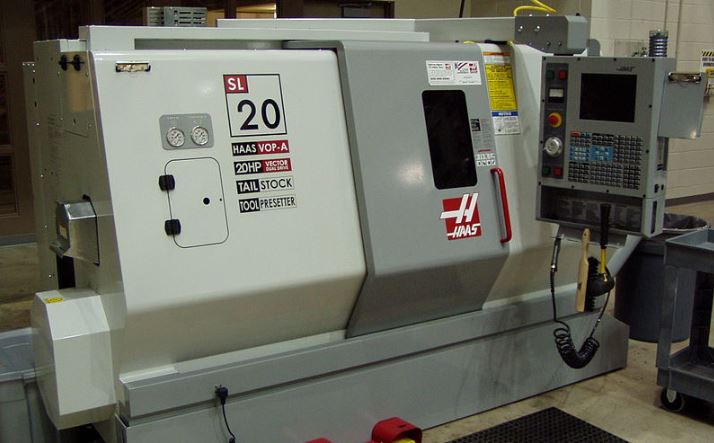
In order to avoid this limitation of NC Machine, the CNC machine uses a computer-generated file to store the program which was written by the usage of G-Codes and M-Codes.
Whatever operation you need to change like speed, feed, depth of cut, etc. can be changed in the program instantly and there is no damage to the file as of tape reader. This is the reason, CNC machines are used which are highly accurate compared to NC Machines.
3. Distributed Numerical Control (DNC Machine):
The DNC Machine is similar to CNC Machine, except a remote computer is used to control no. of machines that can perform no. of operations at a time. Here the central computer or the remote computer communicates with the local CNC computers to do the operation.
Components or Main Parts of NC Machine:
A NC Machine is consist by following parts:
- MCU or CPU
- Drive Unit
- Feedback Devices
- Tape Reader system
- Very Few Manual Controls
Let me explain all these components.
MCU (Memory Controlled Unit):
MCU is the Memory Control Unit that is taking the information from the input devices via the keyboard or mouse and analyze the data, and send the data to the output devices available in the NC machine.
Drive Unit:
Drive unit is a device that is used for converting Electrical energy into Mechanical energy which is required for traveling the axis.
For example, Electric motor.
Here we can use Stepper Motor as the drive unit in CNC Machining.
Stepper Motor:
In case of a stepper motor, when the pulsed electrical energy is given as the input to the motor, the motor starts rotating either by changing the number of pulses of electrical energy input or by changing the rate of pulses of electrical energy input, the RPM of the motor can be changed.
In the case of the stepper motor, there is no mechanism available to stop the motor at the required destination. Therefore the accuracy of the component is poor.
Feedback Devices:
Feedback device is a Displacement Measuring Equipment. MCU will compare the distance traveled by the axis with the distance to be traveled and determines the difference in distance.
The MCU will calculate the no.of pulses and send it to the drive unit. This process continues in the form of a cycle.
Feedback Device→MCU→Drive Unit.
Tape Reader System:
The instructions for doing operation was punched on the paper tape. For reading the instruction given in the punched paper tape, a tape reader system will be used.
Light is provided on one side of the tape and light receiving sensors are placed on the other side.

When the tape is moving and stopping at some location where the holes are present, the light is passing and is incident on light receiving sensors.
The sensors which are receiving the light generate the electrical pulse and that is to be sent to the Memory Control Unit (MCU) to drive the motor of a machine to do the operation precisely.
Very Few Manual Controls:
Even though the above parts are present in the NC machine, still the manual interventions are required for loading and unloading of the workpiece, switching ON and OFF, etc. called manual controls.
These are the NC Machine Parts which are explained in a detailed manner.
Working Principle of NC Machine:
First of all, you need to write a program that is to be punched on the Tape Reader system and from there you can execute the program to see the results. Firstly the data was given to the MCU by means of Keyboard such that MCU can understand it and Analyze according to the data and command to the drive unit to do the operation.
The Program is written by Punching the holes on the Tape. Later, the light will be passed from one side and the sensors will be on the other side and the tape will be in the center.
Once the light is passed through the holes, the sensors will understand the co-ordinates and will execute based on it.
Actually it is a difficult process and it has overcome by CNC Machine.
Here in NC Machines, Stepper Motor acts as a drive unit to do the operation. After completion of the experiment, Feedback devices play a vital role.
They can take the information about the work carried out and send it to the Memory Control Unit. The MCU will analyze with the original data and a difference is to be taken which is commanded to the Machine tool to perform the operation which is left by it.
For Example, If the Machine tool is the drilling machine and it can drill a hole of 7.8 mm. Actually it has to drill up to 8mm. So the MCU will calculate the difference and orders the Machine tool to complete the operation which has not performed perfectly.
In this way, the NC Machine works more accurately compared to the traditional machines. However, the loading of the parts and ON/OFF has to be done by the operators itself.
This is the detailed explanation for the Working of NC Machine. Let's see the Advantages and Disadvantages of it.
Advantages of NC Machine:
The advantages of NC Machine are as follows.
- The manufacturing lead time will be decreased due to the adaption of NC machines.
- It will lead to a reduction in Inventory.
- The Jigs and Fixtures used in NC machines are simpler and less costly as they (fixtures) are replaced with punched Tape and adjusted accordingly.
- As the entire program was written in a Punch tape, so careful measures are to be taken during punching.
- After punching, there is no need for human effort and hence labor problems can be reduced.
- There will be a reduction in floor space in the lab because one NC machine can do various operations and that's the reason it can eliminate all the traditional machines.
- Higher Precision and Productivity.
- Multi-Operational machining and low operator qualification.
Disadvantages of NC Machine:
The disadvantages of NC Machine are as follows.
- A skilled person is required to punch the program on the tape and operate it.
- The equipment and tooling cost is higher than traditional machines.
- Maintenance and Investment cost will be more in NC machines.
- So during operation, the NC machine does not give any option to change the optimal speed and feed. Whatever you want to do, you should have to write the program by punching holes in the tape reader system.
- Most importantly, due to the continuous usage of the tape, it will tear due to the holes present on the tape which can be avoided in the CNC machine by writing the program in the form of a computer file format.
- Due to the evolution of CNC machines, labor has loosed their jobs and leads to Unemployment.
Applications of NC Machines:
The applications of NC Machine are as follows.
- Considering Precision and Accuracy, NC machines are far better than Traditional Machines such as Bench Drilling Machine, Milling Machines, Lathe Machines, Grinding Machines, etc.
- They are used in various small scale industries to do all the operations which cannot be performed on a single machine tool.
- They are widely used in Press working, Automatic drafting, metal cutting, spot welding, assembly of components, and Inspection also.
What is difference between NC and CNC machine?
The difference between NC and CNC machines are as follows.
| NC Machine | CNC Machine |
|---|---|
| NC stands for Numerical Control Machine | CNC stands for Computer Numerical Control machine. |
| Stepper motor is used as a Drive unit. | A servomotor is used as a Drive unit in CNC Machine. |
| Tape reader system is used for the generation of program. | A mini computer is used for the generation of program in the from of a file. |
| The accuracy of machinery is better than Conventional machines. | The accuracy of CNC machinery is better than NC machinery. |
NC stands for Numerical Control machine and CNC stands for Computer Numerical Control
This is a detailed explanation of Numerical Control machines. If you have any doubt, you can ask us and we will reply to you as soon as possible.
Some FAQ on NC Machine:
What are the basic components of NC system?
What is the disadvantage of NC system?
What is NC machine tool?
More Resources:
Milling Machine
Drilling Machine
References [External Links]:
- Numerical Control (NC) Fundamentals
- CNC- Computer Numeric Control - IIT Kanpur


